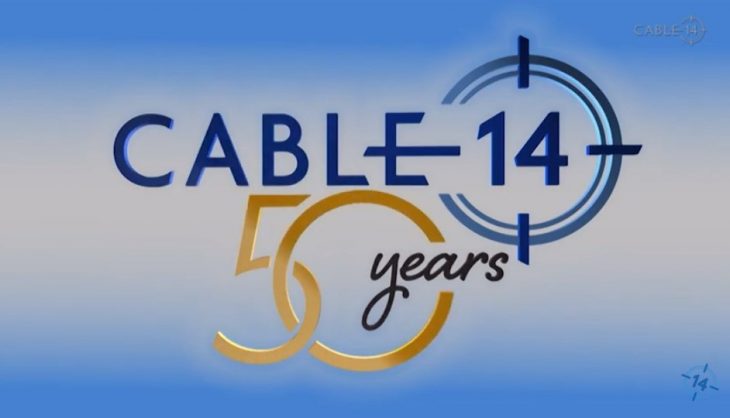
HAMILTON – There were five original owners of the first Hamilton Community Cable Access channel – now well known in the Steel City as Cable 14.
The city was an anomaly with five strong, growing, cable operators in the early ’70s. The owners of General Co-Axial Service (which would become Mountain Cablevision), MacLean-Hunter Cable TV, Northgate Cable T.V., Hamilton Co-Axial (which would become Source Cable) and Western Co-Axial TV and Appliance Service all thought it would be better to pool their resources on a single community channel to serve their city, which they launched in 1969 without (gasp!) regulatory permission.
So, in 1972, the still-new CRTC told the group there was no process to licence a community channel which would essentially be a co-owned Hamilton TV network, especially since the owners themselves didn’t really know where the boundaries of their cable footprints ended. Normally, it’s one cable access channel per cable licence, which generally encompassed a  municipality.
municipality.
The CRTC representative came to town to figure it out “and hauled them all down to the (Royal) Connaught,” telling the cable owners to figure out their own boundaries, or the Commission would do it for them, recalled John Levy, son of the late Cecil Levy, who founded Western Co-Axial, in the recent documentary Cable 14 produced to help celebrate its semicentennial called Local Television: Then. Now. Always. (Cecil Levy is the man on the left, with the late former Mountain Cable owner Owen Boris.)
Boundaries in hand before the commissioner came back from coffee, the CRTC then allowed the companies to keep their creation and established a one-of-a-kind community channel licence, with its own board that featured representatives from each company. That also had the effect of making Cable 8 (its name then) board meetings the place where the owners got together to talk about their challenges running cable companies.
Later, even Rogers founder Ted Rogers, who was busy buying up cable companies, including in Hamilton, would come to the Cable 14 board meetings as one of the part owners. “It was considered neutral ground,” said Cable 14 general manager Brent Rickert in an interview.
Of course, through the years, the independent owners sold to larger operators and so ownership now stands at two – Rogers and Cogeco.
However, the spirit of serving all of Hamilton with top notch community programming has never faded. According to the research Rickert does, Cable 14 has 96% awareness among Hamiltonians who love the channel’s “deeper dive” into the community.
It is the home of the OHL’s Hamilton Bulldogs as well as McMaster University Football. It televises the internationally known Hamilton Around the Bay race (the oldest marathon in North America), and features all sorts of local events from Soupfest to Hamilton Comicon. Its Kiwanis TV Bingo remains popular, too, and is an important source of the Kiwanis Club’s annual budget, which it spends in Hamilton on various charitable endeavours.
Cable 14 also collaborated with the Hamilton Spectator during the most recent federal election for five televised debates between the candidates in each of the city’s ridings.
The channel “is as important to Hamilton as steel and donuts,” said city councillor Jason Farr – who also happened to host South 905 on the channel for many years before becoming an elected official.
Cable 14 was also an early adopter of high definition and for cable subscribers, it offers most of its programming on demand through www.cable14now.com and as of this fall it removed the authentication requirement for the live stream, meaning anyone can watch Hammer Happenings, City Matters, The Opinionators (each of which are deep dives into what’s going on in the city), or any of its original programming – most made by its 150 volunteers, many of whom are Mohawk College students whose journalism students gain experience working at Cable 14.
Twice a year, Cable 14 also opens its doors to new ideas where it accepts and evaluates pitches for new shows from members of the community in order to keep its programming fresh.
Rickert (right) knows community cable channels are inevitably thought of as old media. When anyone can point their phone at themselves and create their own YouTube channel, having access to the traditional TV system might not seem as important as it did when the founding families were building their companies and their cable channel.
However, Cable 14, with its Commission-regulated (if smaller than it used to be) funding from the cable companies can spend wisely and blanket the city, and provide important context and take stories seven or eight minutes long, which is far more in-depth than the typical TV news story.
Besides, he added, “the industry, the landscape, the sector, is all changing, so we’ve always been pretty adaptive, pretty flexible. We’re going to change with the times and be as fluid as we possibly can.”



